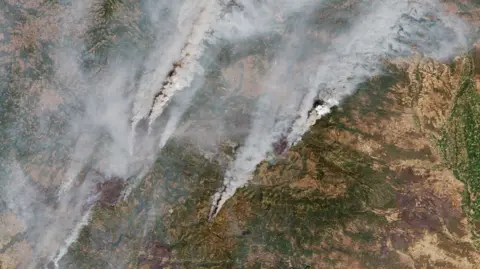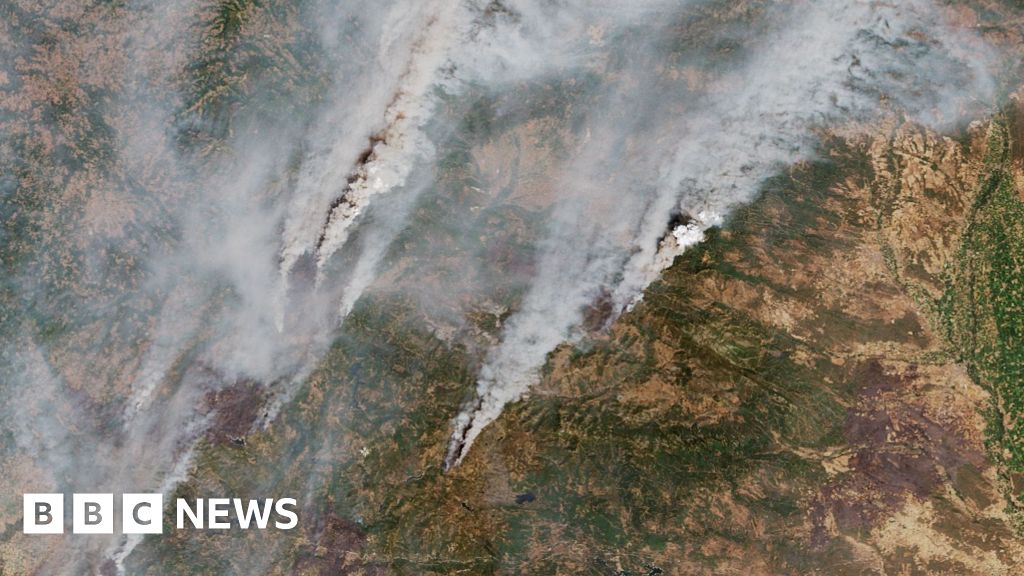In the fight against devastating wildfires, aerial firefighting units often deploy massive amounts of bright pink fire retardant from above. This substance, widely deemed essential for inhibiting flames, can be deployed in just 20 seconds from a specialized aircraft. However, recent findings raise serious concerns regarding its safety and efficacy.
Research indicates that the fire retardant, while effective in slowing the spread of flames, contains harmful heavy metals and various toxic compounds. This presents a problematic choice for firefighters battling increasing wildfire intensity—fueled by climate change—while risking the environment and human health. Many proponents of environmental advocacy are questioning the overall effectiveness of these chemicals and their negative environmental impact.
The past few years have witnessed a marked increase in both the frequency and severity of wildfires across regions, particularly in the western United States. Experts highlight that fires have also accelerated in speed, posing new challenges for firefighting strategies. Additionally, health concerns stemming from wildfire smoke exposure have intensified, with alarming statistics pointing to a 77% rise in public health issues related to smoke between 2002 and now.
Globally, it's estimated that up to 675,000 premature deaths each year can be connected to smoke produced by wildfires. This data underscores the pressing need to balance firefighting techniques with public health and safety, reinforcing the conversation around the future of fire retardants and their place in wildfire management.
As environmental conditions evolve, so too must the methodologies used to combat wildfires, making it essential to explore new alternatives that safeguard both human health and the environment while effectively managing burgeoning wildfire threats.
Research indicates that the fire retardant, while effective in slowing the spread of flames, contains harmful heavy metals and various toxic compounds. This presents a problematic choice for firefighters battling increasing wildfire intensity—fueled by climate change—while risking the environment and human health. Many proponents of environmental advocacy are questioning the overall effectiveness of these chemicals and their negative environmental impact.
The past few years have witnessed a marked increase in both the frequency and severity of wildfires across regions, particularly in the western United States. Experts highlight that fires have also accelerated in speed, posing new challenges for firefighting strategies. Additionally, health concerns stemming from wildfire smoke exposure have intensified, with alarming statistics pointing to a 77% rise in public health issues related to smoke between 2002 and now.
Globally, it's estimated that up to 675,000 premature deaths each year can be connected to smoke produced by wildfires. This data underscores the pressing need to balance firefighting techniques with public health and safety, reinforcing the conversation around the future of fire retardants and their place in wildfire management.
As environmental conditions evolve, so too must the methodologies used to combat wildfires, making it essential to explore new alternatives that safeguard both human health and the environment while effectively managing burgeoning wildfire threats.





















